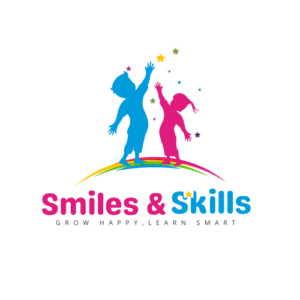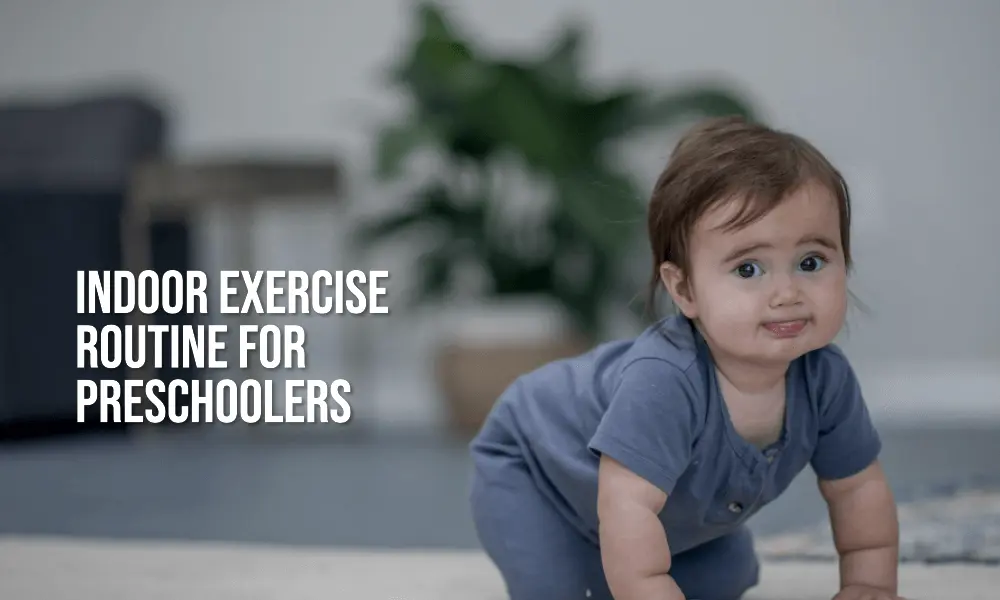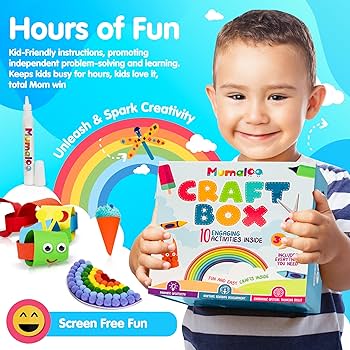Preschoolers can participate in indoor exercise routines to stay active and develop their motor skills. Here are some engaging and age-appropriate exercises for preschoolers to try at home!
From jumping jacks to animal walks, these activities will not only promote physical fitness but also improve coordination and balance. With a few props like hula hoops and bean bags, parents can make the exercises even more fun and interactive.
Additionally, incorporating music and dancing into the routines can enhance the preschoolers’ overall enjoyment and engagement. By providing a variety of exercises that target different muscle groups, children can receive a well-rounded workout while having a great time indoors.
Importance Of Indoor Exercise For Preschoolers
The importance of indoor exercise for preschoolers cannot be overstated. It plays a crucial role in their physical and mental development, while also setting the foundation for a lifetime of fitness habits.
Physical Development Benefits
Engaging in regular indoor exercise helps preschoolers develop their gross motor skills and improve coordination and balance. Through activities like running, jumping, and climbing, they enhance muscle strength and flexibility, leading to better control over their bodies. These physical development benefits contribute to their overall growth and well-being.
Indoor exercise is not just beneficial for physical development but also plays a significant role in supporting preschoolers’ mental health. Physical activity helps release endorphins, which are natural mood-boosting hormones. It reduces stress and anxiety, enhancing their overall sense of well-being and happiness. Regular exercise can also improve self-esteem and body image from an early age, promoting a positive mindset.
The early years of childhood are critical for establishing lifelong habits, and introducing indoor exercise routines at a preschool age sets the stage for a future of health and well-being. By making physical activity a regular part of their routine, preschoolers are more likely to continue being active into adolescence and adulthood. Instilling these habits early on helps reduce the risk of sedentary lifestyles and associated health issues such as obesity, diabetes, and heart diseases.
Considering the benefits of indoor exercise for preschoolers, it’s crucial to provide them with adequate opportunities to engage in physical activities even when they are indoors. With a wide range of fun-filled exercises and games tailored to their age, preschoolers can enjoy the benefits of regular exercise while having a great time.
Designing Indoor Exercise Routines
In today’s fast-paced world, it’s important to keep our preschoolers active and engaged, even when outdoor playtime is not an option. Designing engaging indoor exercise routines not only helps promote physical health but also supports their overall development. By considering factors that encourage preschooler engagement, adhering to safety guidelines, and finding the right balance between structure and free play, parents and caregivers can create fun and effective indoor exercise routines for their little ones.
Factors To Consider For Preschooler Engagement
When designing indoor exercise routines for preschoolers, it’s essential to consider factors that keep them engaged and interested. Preschoolers have short attention spans and boundless energy, so activities need to be stimulating and interactive. Here are some factors to consider:
- Variety: Offering a variety of activities ensures that preschoolers remain excited and engaged. Mix up exercises that focus on different skills such as gross motor skills, coordination, balance, and flexibility.
- Age-appropriate challenges: Design exercise routines that align with the preschoolers’ developmental stage and abilities. Providing activities that are too easy may lead to boredom, while those that are too challenging can cause frustration.
- Fun and playfulness: Incorporate elements of fun and playfulness into the exercise routines to make them enjoyable for preschoolers. Consider using props, music, or storylines to add excitement and captivate their attention.
Safety Guidelines For Indoor Activities
Prioritizing safety is crucial when designing indoor exercise routines for preschoolers. Ensuring a safe environment minimizes the risk of accidents and injuries. Here are some safety guidelines to follow:
- Clear the space: Make sure the exercise area is clear of any obstacles, such as furniture or sharp objects, that may pose a risk to the child’s safety during physical activities.
- Supervision: Always supervise preschoolers during their indoor exercise routines to provide immediate assistance if needed. This helps prevent accidents and ensures their well-being.
- Age-appropriate equipment: Choose exercise equipment and props that are suitable for preschoolers. Avoid small objects that can be a choking hazard and opt for materials that are non-toxic and durable.
- Protective measures: When needed, encourage preschoolers to use protective gear like helmets, pads, and appropriate footwear, especially during activities that involve balance or coordination.
Balancing Structure And Free Play
When designing indoor exercise routines for preschoolers, finding the right balance between structure and free play is vital. While structure provides a framework for learning and development, free play allows children to explore their creativity and imagination. Here are some tips:
- Create a routine: Establish a consistent routine that includes structured exercise activities at specific times. This helps preschoolers develop discipline and a sense of responsibility.
- Incorporate free play: Allocate time within the routine for unstructured play where preschoolers can choose their activities. This fosters independence and encourages their creativity.
- Combine structure and free play: Integrate structured exercises with opportunities for free play by incorporating games or challenges that allow preschoolers to apply the skills they have learned in a fun and imaginative way.
By considering factors that engage preschoolers, adhering to safety guidelines, and balancing structure and free play, you can design indoor exercise routines that are not only entertaining but also beneficial for their development and well-being.
Creative Indoor Exercises For Preschoolers
Keeping preschoolers active and engaged can be a challenge, especially when weather conditions or other circumstances keep them indoors. However, with a little creativity and some household items, you can create fun and exciting indoor exercise routines for your preschoolers. In this article, we’ll explore three creative indoor exercises that will not only keep your little ones entertained but also help them develop important motor skills and boost their imagination.
Dance Party Moves That Build Motor Skills
Dancing is a fantastic way to get your preschooler moving and grooving, while simultaneously building their motor skills. By incorporating dance party moves into their indoor exercise routine, you can enhance their balance, coordination, and rhythm. Here are a few dance party moves that are perfect for preschoolers:
- Hopscotch jump: Encourage your child to jump from one foot to the other, mimicking the game of hopscotch. This exercise helps improve balance and coordination.
- Twirling tornado: Have your preschooler spin in circles, arms outstretched like a tornado. This move enhances their spatial awareness and coordination.
- Jumping jacks: Teach your child how to do simple jumping jacks, which help strengthen their leg muscles and improve cardiovascular health.
Obstacle Courses Using Household Items
Transform your living room into an exciting obstacle course using items you already have at home. Not only will this engage your preschooler’s imagination, but it will also enhance their gross motor skills and problem-solving abilities. Here are a few ideas for creating obstacle courses:
- Chair tunnel: Arrange chairs in a line and drape a blanket over them to create a tunnel. Encourage your child to crawl through the tunnel, which helps develop their crawling skills and spatial awareness.
- Balancing beam: Lay a long piece of tape on the floor to act as a balancing beam. Challenge your preschooler to walk along the beam without falling off, improving their balance and coordination.
- Pillow stepping stones: Scatter pillows on the floor and challenge your child to hop from one pillow to another without touching the ground. This exercise improves their balance, coordination, and strengthens their leg muscles.
Imaginative Yoga Poses For Little Ones
Yoga is not just for adults – it can also have immense benefits for preschoolers. Introducing imaginative yoga poses can help your little ones develop body awareness, flexibility, and mindfulness. Here are some fun yoga poses that will stimulate your preschooler’s imagination:
| Yoga Pose | Description |
|---|---|
| Downward Dog: | Have your child assume a dog-like position, with their hands and feet on the ground and their hips lifted. This pose stretches their hamstrings and back. |
| Butterfly Pose: | Instruct your preschooler to sit on the floor, bending their knees and bringing the soles of their feet together. This pose opens up the hips and stretches the inner thighs. |
| Tree Pose: | Encourage your child to stand tall with their feet together and place one foot on the opposite leg’s inner thigh. This pose helps improve balance and concentration. |
By incorporating these creative indoor exercises into your preschooler’s routine, you can ensure they stay active, enhance their motor skills, and fuel their imagination. So put on some music, transform your living room into an obstacle course, and get ready for a fun-filled and active indoor exercise session!
Indoor Exercise Routines For Preschoolers Simplified
Simplify indoor exercise routines for preschoolers with easy-to-follow activities that keep them engaged and active. Build motor skills and boost energy in a fun and interactive way. Choose from a range of exercises designed specifically for young children.
Routine Samples For Varying Energy Levels
Indoor exercise routines for preschoolers are a fantastic way to keep your little ones active, engaged, and happy, especially when outdoor play is not possible. These routines are designed to cater to varying energy levels, ensuring each child stays active regardless of their individual needs. By providing a simplified routine with clear instructions, you can make indoor exercise enjoyable for your preschooler while promoting their physical development.
Below are some sample routines for different energy levels that you can try with your preschooler:
Low energy level:
- Have your child do a series of gentle stretches and yoga poses such as the cat-cow stretch or child’s pose.
- Set up an obstacle course using pillows, cushions, and soft toys for your child to crawl under, jump over, and navigate through.
Moderate energy level:
- Encourage your child to jump rope or hop on one foot to improve their balance and coordination.
- Play a game of “Simon Says” where your child has to follow different movement commands such as jumping jacks, hopping, or marching in place.
- Create a mini dance party with their favorite tunes, allowing them to groove and let loose.
High energy level:
- Set up a mini indoor obstacle course with tunnels, cones, and balancing beams for your child to climb over, crawl under, and maneuver through.
- Initiate a game of “Musical Statues” where your child has to freeze in different poses whenever the music stops.
- Try a basic cardio workout routine with jumping jacks, high knees, and jogging in place.
Integrating Educational Components: Numbers, Colors, Shapes
Indoor exercise routines for preschoolers can be made even more engaging by integrating educational components. By incorporating numbers, colors, and shapes into the activities, you can enhance your child’s learning experience while they exercise.
Here are some ways to infuse educational elements into the indoor exercise routines:
- While stretching, have your child identify and name different colors.
- As they go through the obstacle course, ask them to identify and count the number of shapes they encounter.
- During the dance party, encourage them to move in patterns, such as making circles, squares, or triangles with their bodies.
- Play a game of “Color Freeze” where your child has to freeze in a pose that matches a specific color you call out.
By integrating educational components into indoor exercise routines, you can make physical activity a fun and enriching experience for your preschooler. They will not only develop their motor skills, but also enhance their cognitive abilities in a playful and interactive way.
Making Exercise A Fun Family Affair
Transform indoor exercise routines for preschoolers into a fun family affair, making fitness enjoyable for everyone. Engage in interactive games, dance parties, and yoga sessions that keep toddlers active and entertained.
Involvement Strategies For Parents And Siblings
When it comes to making exercise a fun family affair, the involvement of parents and siblings plays a crucial role. By actively participating in the exercise routine, parents and older siblings not only serve as role models but also create a positive and encouraging atmosphere for the preschoolers. Here are some effective strategies to get everyone involved:
- Set milestones and goals together as a family: Setting milestones and goals helps to keep the motivation high and encourages everyone to keep pushing themselves. Whether it’s completing a certain number of jumping jacks or running a specific distance, involving the entire family in goal setting promotes a sense of shared accomplishment.
- Create friendly competitions: Kids love a good competition, and introducing friendly challenges during exercise time can make it even more exciting. Organize simple races or timing-based contests where everyone can participate and have fun while getting their hearts pumping.
- Involve parents and siblings as workout buddies: Rather than just supervising, parents and older siblings can actively participate in the exercise routines alongside preschoolers. This not only allows for quality bonding time but also makes the workouts more enjoyable for everyone.
- Rotate the role of leading the exercise session: Take turns in leading the exercise session to give each family member a chance to be in charge. This helps to boost confidence in the preschooler leading the routine and allows others to follow along and learn from each other.
- Offer rewards and praises: Positive reinforcement goes a long way in motivating preschoolers to stay engaged in exercise. Offer small rewards or praise their efforts to encourage their continued participation. This reinforcement can also be extended to parents and siblings, creating a positive environment for the whole family.
Creating A Positive And Encouraging Exercise Environment
Creating a positive and encouraging exercise environment is vital to keep preschoolers motivated and excited about their indoor exercise routines. Below are some strategies to foster such an environment:
- Designate a bright and inviting exercise area: Set up a dedicated exercise area in your home that is well-lit, colorful, and filled with age-appropriate exercise equipment. This designated space helps to create a positive association with exercise and encourages preschoolers to participate willingly.
- Use upbeat music and interactive routines: Incorporate lively and child-friendly music into the exercise routines to make them more enjoyable and entertaining. Accompany the music with interactive movements, such as dancing or singing, to make the experience interactive and engaging.
- Praise effort over perfection: Focus on praising effort rather than perfect execution of exercises. By emphasizing the importance of trying one’s best and celebrating small achievements, you can help preschoolers build confidence and develop a positive mindset towards exercise.
- Keep it varied and age-appropriate: Children have short attention spans, so it’s essential to keep the exercise routines diverse and age-appropriate. Introduce new activities and challenge them at a level suitable for their abilities, ensuring that the exercises remain engaging and enjoyable.
- Make it a regular and consistent practice: Consistency is key to developing a habit, so aim to make indoor exercise a regular part of your family’s routine. Set aside specific times for exercise and make it a priority, just like any other daily activity. This regularity helps preschoolers feel more comfortable and excited about participating.

Credit: www.childrens.com
Tracking Progress And Keeping Motivated
Preschoolers can stay on track and stay motivated with indoor exercise routines. By tracking progress and setting goals, they can engage in fun activities that keep them active and boost their overall well-being.
Reward Systems And Recognizing Achievements
The key to keeping preschoolers motivated during indoor exercise routines is by implementing reward systems and recognizing their achievements. Children thrive on positive reinforcement, and incorporating a reward system can make exercising even more enjoyable and encouraging for them.
One effective way to reward preschoolers for their efforts is by creating a sticker chart. This simple yet effective method helps track their progress and visually represents their achievements. Set achievable goals for your little ones, and every time they complete a workout session, mark it with a colorful sticker on the chart. As they accumulate stickers, their excitement and motivation will soar.
Adapting Routines To Keep Them Exciting And Challenging
To sustain engagement and enthusiasm, it’s essential to adapt indoor exercise routines to keep them exciting and challenging for preschoolers. As their abilities and fitness levels improve, it’s important to gradually increase the difficulty of the exercises while keeping them age-appropriate and fun.
One way to do this is by introducing new exercises or variations to existing ones. For example, you can incorporate animal-themed movements like hopping like a frog or crawling like a bear. This not only adds variety to the routine but also encourages imaginative play, making exercise sessions enjoyable and stimulating for your little ones.
Another method to keep preschoolers excited about exercising is by incorporating games or music into their routines. Organize a dance party where they can show off their moves or create a game of obstacle course using cushions, pillows, and hula hoops. By making exercise feel like playtime, you’ll ensure that your preschoolers stay motivated and look forward to their daily indoor workouts.
Finally, it’s important to remember that every child is unique, and what works for one may not work for another. Monitor your child’s progress and listen to their feedback. Adjust the routines accordingly to keep them engaged and interested in their indoor exercise journey.
So go ahead, track their progress, reward their achievements, and adapt the routines to keep them exciting and challenging. Your preschoolers will not only enjoy their indoor exercise routines but will also develop healthy habits that will benefit them for years to come.
| Reward Systems and Recognizing Achievements | Adapting Routines to Keep Them Exciting and Challenging |
|---|---|
|
|
Frequently Asked Questions Of Indoor Exercise Routines For Preschoolers
Can Preschoolers Benefit From Indoor Exercise Routines?
Yes, preschoolers can benefit greatly from indoor exercise routines. Regular physical activity helps improve their motor skills, boosts their cognitive development, and helps burn off excess energy, promoting better sleep.
What Are Some Fun Indoor Exercise Activities For Preschoolers?
There are plenty of fun indoor exercise activities for preschoolers, such as dancing, playing active games like Simon says or musical chairs, creating obstacle courses using pillows and cushions, and practicing yoga poses designed for their age group.
How Much Time Should Preschoolers Spend On Indoor Exercises?
Preschoolers should aim for at least 60 minutes of physical activity every day, including both indoor and outdoor exercises. However, it is important to break this time into smaller sessions throughout the day to accommodate their shorter attention spans and provide variety in activities.
Are There Any Safety Considerations For Indoor Exercise Routines?
Yes, it’s important to ensure a safe environment for preschoolers during indoor exercise routines. Clearing the space of any tripping hazards, using age-appropriate equipment, supervising their activities, and teaching proper form and technique are essential for their safety and well-being.
Conclusion
To summarize, indoor exercise routines offer endless opportunities for preschoolers to remain active, healthy, and engaged, especially during times when going outside is not possible. These routines not only promote physical development but also enhance their cognitive skills, balance, coordination, and social interaction.
By incorporating these suggested activities and making them a part of their daily routine, parents and caregivers can ensure that their little ones have a blast while staying fit and healthy. Ready for some indoor fun? Let’s get moving!




